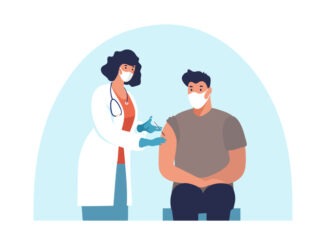
New research on long COVID in adults and children supports the multi-disciplinary approach to clinical care that is being provided at long COVID clinics in England, experts have said
CREDIT: This is an edited version of an article that originally appeared on The BMJ
“Long COVID seems to be a condition where multiple symptoms are very common,” Terence Stephenson, Nuffield professor of child health at the UCL Great Ormond Street Institute of Child Health in London, told a science media centre briefing. “I think the services that have been set up in England for young people do address that.
“They are holistic and comprehensive in their approach, rather than addressing single organs or single problems,” he said. Professor Stephenson is the lead author of the Children and Young People with Long COVID (Clock) study, published in Lancet Adolescent and Child Health. “If you have a mixture of symptoms of headache, cough and dizziness, you probably want to go to a service that can deal with you holistically, with all your symptoms,” he added.
There are currently around 80 long COVID clinics in England that take referrals from primary care for adults or children who are experiencing a range of symptoms that might include brain fog, anxiety, depression, breathlessness and fatigue.
Tim Nicholson, a clinical lecturer at the Institute of Psychiatry, Psychology and Neuroscience at King’s College London, said, “People have set up adult long COVID clinics according to what their local expertise is but, generally, there’s been a similar pattern of service provision, which is multi-disciplinary and has general physicians – sometimes with different areas of expertise – with physiotherapists’, occupational therapists’ and mental health input.”
Nicholson, who is a co-author of the new PC-COS preprint paper that provides a consensus statement on core outcomes of long COVID in adults, added, “It’s really important that it continues in that way. I think they’re actually rethinking the model, and perhaps the NHS will become slightly more prescriptive in terms of the services required to optimally meet patients’ needs. I think we just need to be open about our lack of full understanding of what’s required, and change and adapt what we do as best we can as we learn more about this disorder.”
The Clock study assessed symptoms in 6,804 adolescents aged 11-17 – 3,065 of whom had had a positive result from PCR testing for SARS-CoV-2 infection, and 3,739 of whom had tested negative. It found that participants who had tested positive had symptoms that were similar to those who had tested negative but with a higher prevalence of single and, particularly, multiple symptoms at the time of PCR testing and three months later.
At the time of PCR testing 936 (30.5%) of the positive test group, and 231 (6.2%) from the negative group, had three or more symptoms. Three months after testing, 928 (30.3%) of the positive group, and 603 (16.2%) of the negative group, had three or more symptoms. At three months after testing the most common symptoms among the positive group were tiredness (1,196 people [39.0%]), headache (710 [23.2%]) and shortness of breath (717 [23.4%]).
The estimated probability of having multiple symptoms (dominated by tiredness, headache, shortness of breath and dizziness) was 29.6% (95% confidence interval 27.4% to 31.7%) in the positive group and 19.3% (17.7% to 21%) in the negative group (risk ratio 1.53 [1.35 to 1.70]).
“It may be that for some people with long COVID you need to be referred on to someone very specialist, but…it’s not going to be one magic bullet, one drug, or one therapy that’s going to help,” said Professor Stephenson. “People are probably going to need a spectrum of inputs to help them.”
Professor Stephenson is also lead author of a paper accepted in Archives of Disease in Childhood which has produced a consensus on a definition of long COVID in children. The statement, intended to be used for research purposes, and not for clinical referral, reads, “Post-COVID-19 condition occurs in young people with a history of confirmed SARS CoV-2 infection, with at least one persisting physical symptom for a minimum duration of 12 weeks after initial testing that cannot be explained by an alternative diagnosis. The symptoms have an impact on everyday functioning, may continue or develop after COVID-19 infection, and may fluctuate or relapse over time.”


Be the first to comment